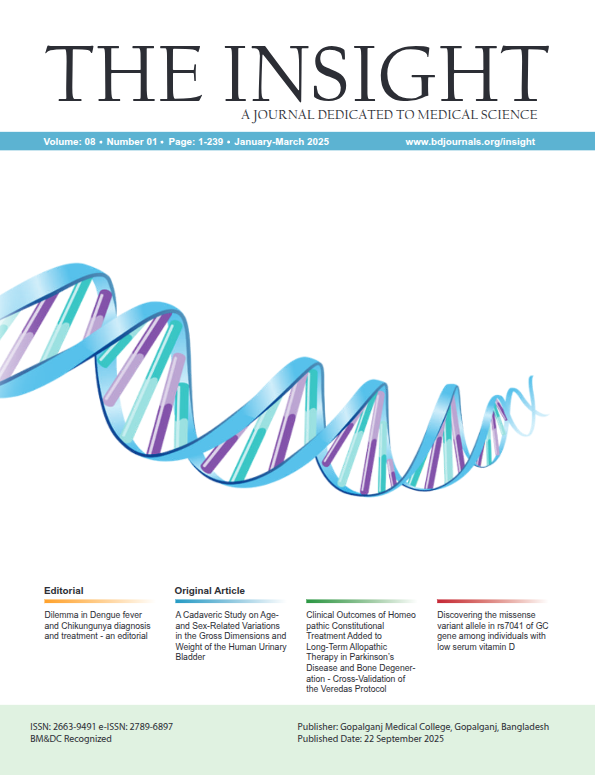Abstract
Background: Stroke is a leading cause of morbidity and mortality, with hypertension being a major modifiable risk factor. Early identification of stroke subtypes is critical for timely management, especially in resource-limited settings. Objective: To assess the clinical presentation and distribution of stroke subtypes among hypertensive patients in a tertiary care hospital. Methods & Materials: This cross-sectional study was conducted in the Department of Medicine, Comilla Medical College Hospital, Comilla, Bangladesh, from January 2013 to June 2013. In this study, a total of 100 hypertensive patients diagnosed with stroke were included. Results: The mean age was 52.8 ± 11 years, with 72% females (male-to-female ratio 1:2.6). Hemiparesis was the most common deficit in ischemic stroke (87.5%), while hemiplegia predominated in haemorrhagic stroke (35%). The basal ganglia and parietal regions were most frequently affected in both subtypes. Unconsciousness occurred in all ischemic cases (100%) versus 50% of haemorrhagic strokes; headache and vomiting were more frequent in haemorrhagic stroke (100% and 90%, respectively). Mean GCS scores were slightly lower in ischemic (9.4 ± 3.1) than haemorrhagic stroke (10.6 ± 2.6). Conclusion: Hypertensive patients demonstrate distinct clinical and anatomical patterns in ischemic and haemorrhagic strokes. Awareness of these differences, along with lipid profile assessment, can support early diagnosis and targeted management, particularly in settings with limited imaging resources.

This work is licensed under a Creative Commons Attribution 4.0 International License.
Copyright (c) 2025 The Insight





 PDF
PDF